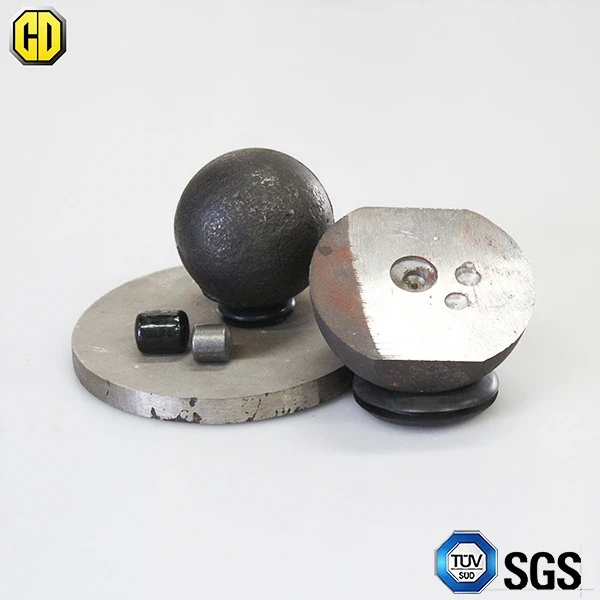Oct . 24, 2025 15:25 Back to list
High Chrome Grinding Media: High Hardness, Low Wear Rate
What’s Really Happening in High Chrome Grinding: Field Notes, Specs, and Buying Tips
If you watch the mills as closely as I do, you’ll know wear costs are quietly shaping capex decisions. That’s why High Chrome Grinding Media keeps popping up in budget meetings—especially in cement and mining. To be honest, it isn’t a one-size-fits-all solution, but when chemistry, heat treatment, and sizing come together, the results can be startlingly good.

Industry snapshot
Cement producers shifting to high-blain finishes; copper and gold concentrators chasing lower grind energy; and even some refractory lines—everyone’s squeezing more life out of media. Many customers say High Chrome Grinding Media cut their make‑up rate by 10–25% compared with low‑chrome or forged in non‑impact mills. Real‑world use may vary, of course, depending on pH, pulp chemistry, liner profile, and mill speed.
Product spec at a glance (High Chrome Grinding Ball)
| Material | High chromium white cast iron (ASTM A532 Type III approx.) |
| Chrome content | ≈10–28% Cr (with Mo/Ni adjustments as required) |
| Size range | 10–140 mm |
| Hardness (typ.) | HRC 58–64 (ASTM E18), surface to core gradient controlled |
| Microstructure | M7C3 carbides in martensitic matrix; retained austenite checked |
| Use cases | Cement finish mills, regrind circuits, chemical & petroleum, refractory, construction materials |
| Color | Black (as-cast/treated) |
How it’s made (the honest version)
Materials: high‑purity pig iron + ferrochrome (10–28% Cr), with Mo/Ni for hardenability and toughness. Method: precision casting (static or automatic lines), followed by quench and temper. I’ve seen some plants add isothermal holds to stabilize martensite—smart move. Testing: Rockwell hardness (ASTM E18), Charpy impact (ISO 148‑1) on representative sizes, drop tests, metallography (ASTM E407 etch). Dimensional checks loosely guided by ISO 3290 for sphericity where it matters.
Service life: in clinker grinding, High Chrome Grinding Media often runs 1.3–2.0× vs. low‑chrome, with wear rates around 20–60 g/t in well‑tuned circuits. In sulfide ores, corrosion‑wear interplay complicates things—pH control and media selection go hand‑in‑hand.
Applications and quick case
Industries: cement, mining (Cu/Au/Fe), power plant limestone FGD, chemical grinding, refractory. One North Asia cement customer told me their make‑up charge dropped ≈18% after switching to High Chrome Grinding Media in a 2‑chamber mill, while Blaine stayed constant; audit confirmed HRC 60±2 and uniform microstructure.
Vendor landscape (my field notes)
| Vendor | Cr range | Heat treatment | Certs | Lead time | Notes |
|---|---|---|---|---|---|
| CD Chengda (Hebei) | 10–28% | Quench + temper | ISO 9001 | ≈3–6 weeks | Strong casting control; flexible sizing 10–140 mm |
| Magotteaux | High‑Cr | Proprietary treatments | ISO 9001 | Made‑to‑order | Strong process support |
| AIA Engineering (Vega) | Med/High‑Cr | Controlled quench/temper | ISO 9001 | Regional | Global footprint |
| Moly‑Cop | Alloy options | Forged/cast lines | ISO 9001 | Varies | Strong in large SAG ecosystems |
Customization tips
- Match chrome content to media size and mill chemistry; avoid over‑hardening cores on big diameters.
- Ask for hardness profile (surface/core) and microstructure photos; many buyers skip this.
- For acidic pulps, consider corrosion inhibitors or blends with High Chrome Grinding Media in critical chambers.
Testing checklist (what I request)
Batch HRC map (ASTM E18), Charpy (ISO 148‑1) on 20–40 mm and 80–100 mm, metallography with M7C3 validation, and a 2‑meter drop test series. Dimensional tolerances referenced to ISO 3290 bounds where applicable.
Citations
- ASTM A532/A532M: Standard Specification for Abrasion-Resistant Cast Irons.
- ASTM E18: Standard Test Methods for Rockwell Hardness of Metallic Materials.
- ISO 148-1: Metallic materials — Charpy pendulum impact test — Part 1: Test method.
- ISO 3290-1: Rolling bearings — Balls — Requirements.
- GB/T 17445-2009: High chromium cast iron (China National Standard).
-
Expert Insights on Fabricantes de Bolas de Molienda de Acero: Global Applications & Trends
NewsNov.23,2025
-
Leading Fabricantes de Bolas de Molienda: Your Ultimate Guide to Grinding Balls
NewsNov.23,2025
-
Fabricante de Bolas de Molienda – Quality Grinding Balls for Efficient Industry
NewsNov.23,2025
-
Trusted Proveedores de Medios de Molienda for Efficient Industrial Grinding
NewsNov.22,2025
-
Proveedores de Bolas de Molienda: Your Guide to Top Grinding Ball Suppliers & Industry Insights
NewsNov.22,2025
-
Proveedor de Bolas de Molienda: Choosing Quality Grinding Ball Suppliers for Mining & Industry
NewsNov.21,2025
Realted Products
















